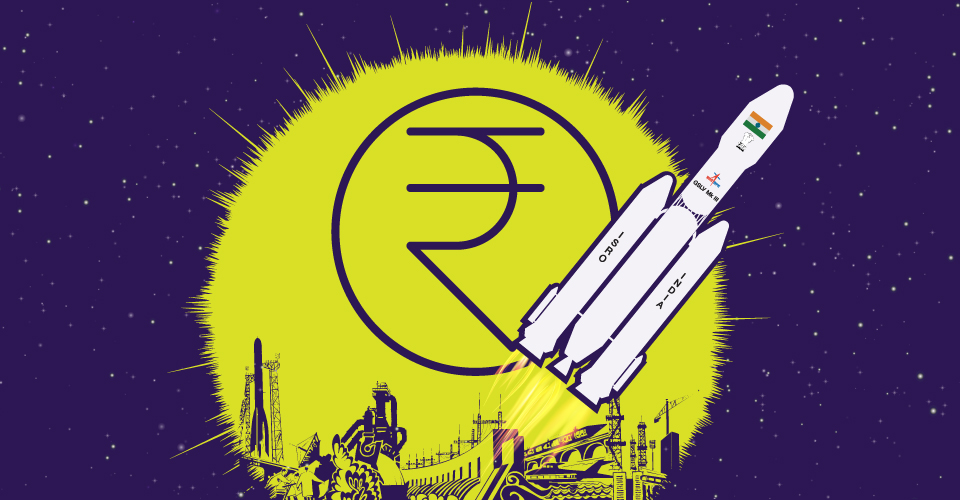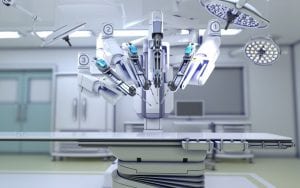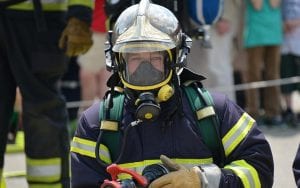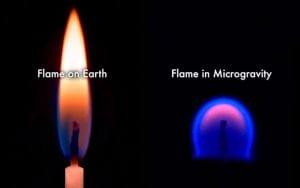
- Home
- News
- Analysis
- States
- Perspective
- Videos
- Education
- Entertainment
- Elections
- World Cup 2023
- Features
- Health
- Budget 2024-25
- Business
- Series
- NEET TANGLE
- Economy Series
- Earth Day
- Kashmir’s Frozen Turbulence
- India@75
- The legend of Ramjanmabhoomi
- Liberalisation@30
- How to tame a dragon
- Celebrating biodiversity
- Farm Matters
- 50 days of solitude
- Bringing Migrants Home
- Budget 2020
- Jharkhand Votes
- The Federal Investigates
- The Federal Impact
- Vanishing Sand
- Gandhi @ 150
- Andhra Today
- Field report
- Operation Gulmarg
- Pandemic @1 Mn in India
- The Federal Year-End
- The Zero Year
- Premium
- Science
- Brand studio
- Home
- NewsNews
- Analysis
- StatesStates
- PerspectivePerspective
- VideosVideos
- Entertainment
- ElectionsElections
- Sports
- Loading...
Sports - Features
- Budget 2024-25
- BusinessBusiness
- Premium
- Loading...
Premium

Why India must keep chasing its space dream

Why do we spend millions of rupees on space explorations, say for example mission Chandrayaan-2? What is the urgency to know how and when the Moon was formed when a sizeable chunk of the Indian population struggles to get clean drinking water and enough food to eat? There are many of the view that astronomy and space exploration have no direct relation to life on Earth and may even be a...
Why do we spend millions of rupees on space explorations, say for example mission Chandrayaan-2? What is the urgency to know how and when the Moon was formed when a sizeable chunk of the Indian population struggles to get clean drinking water and enough food to eat? There are many of the view that astronomy and space exploration have no direct relation to life on Earth and may even be a misplaced priority.
As Chandrayaan-2 speeds towards the Moon, some wonder whether politics is driving space exploration. It is definitely something to consider as this mission will make India only the fourth nation in the world to soft land on the satellite. And no one can deny the role of politics in the field after the Cold War, when the United States and the erstwhile Soviet Union competed to put the first man in space and have the first man walk on the Moon. However, the motivation is not entirely political.
Spin-offs

Space research has helped those of us on Earth quite a bit and we don’t even know it. For example, when a surgeon suggests robotic surgery, it is possible thanks to space exploration. Robotic surgery enables intricate surgical removal of brain tumours without damaging surrounding brain neurons. The technology was developed for the robotic arm attached to the outside of the International Space Station. The arm was designed and developed to avoid high-risk spacewalk by astronauts for maintenance work of the exterior of the ISS.
Another development that happened because of space research is for firefighters. Firefighters around the world use a light, comfortable face mask with a wide field of view. The technology was developed for the Apollo mission by NASA. Before that, the breathing gear weighed about 30 kg, was cumbersome and often not utilised. Space exploration impelled innovation of new materials that are lighter, sturdier and more durable.
Typically, 98 per cent of the take-off weight of a rocket is fuel. The payload is just 2-3 per cent of the total weight. If we somehow made the satellite components lighter, we can pack more electronics into the payload limit.
The quest for developing a composite material that would be lightweight yet sturdy led former Indian president APJ Kalam to create lightweight calipers for polio patients. Made from glass-filled polypropylene, smart material used in the fabrication of satellite components, these calipers weighed just 300 gm, while the standard calipers were around 4 kg. Imagine what a relief it was to polio-affected children.

Do you wear spectacles or sunglasses? Is it scratch resistant? You are using space technology. The near-Earth space is filled with micrometeorite travelling from every direction. Earth’s thick atmosphere protects us from rain of these dust and small particles flying at high velocity. However, in space, the micrometeorites incessantly bombard the exterior of the space station and cause micro craters. The astronaut’s helmet visors, in particular, needed a scratch-resistant coating to ensure clear vision. The quest led to the discovery of a special plastic coating that made the vizor 10 times more scratch-resistant than uncoated ones. Voila, scratch-free specs and sunglasses!
When the robotic arm for the ISS was being developed, no one thought it would one day have an application on the surgical table. Such unintended technology creations are called ‘spin-offs’. The list of spin-offs from space exploration is voluminous.
Novel technology from space
Light a candle, we see a yellow flame. Due to convection on Earth, carbon particles are continuously heated, giving a yellow hue to the flame. Go to YouTube and search for ‘Candle flame aboard the ISS’. The fire is not only spherical but also blue! The playful experiment conducted at the ISS showed that under the microgravity conditions of space, in the absence of convection, the burning is almost free of soot.

From humble stoves in rural areas to coal-fired power plants and diesel engines, an estimated 17 million tonnes of soot per year is pumped into the atmosphere. Soot, nanoscopic particles created during incomplete combustion, is the second highest contributor to global warming. It is 10 times more harmful than the much-maligned carbon dioxide. Reducing even part of it is an excellent service to the environment. Soot not only furthers global warming but also pollutes the air and is a significant health hazard.
But why is soot formation suppressed in microgravity? Is it the flame’s properties or the gas flow pattern that do the trick? Using the experiments aboard the ISS, scientists are proposing to create designer flames that will emit less soot. A technology that may soon put an end to soot pollution.
From exotic crystals grown under microgravity conditions, to investigating the blue and red light-induced phototropism in plants grown in microgravity, and experiments on slosh dynamics of fluids, scientists are asking novel questions and exploring radical answers. Such revolutionary answers enable us to think of out-of-the-box solutions to problems at hand. However, we would have never known that the soot is suppressed under microgravity conditions if we had not gone to space in the first place.
A reality check
As a result of human ignorance, greed and plunder, the Earth is under threat. The danger of runaway global warming looms large. We study the dynamics of the Earth using computer modelling to find ways to fix it. How sure can we be of the feedback we programme into the algorithms. We have only one Earth, and hence, experiments on global dynamics are not feasible. Without experimental proof, however compelling, theories lack confidence. Studying other planets and solar system objects, called planetary sciences, helps us understand Earth, its evolution and dynamics better. If we hope to make rational decisions, we cannot do without space sciences. The data and insights from space explorations serve as a reality check for the global dynamics and computer models that we craft. Going to the Moon and Mars is essential for our survival.
Because it is there!
When a reporter from The New York Times asked the famous American mountaineer George Mallory, “Why do you want to climb Mount Everest?”, he retorted, “Because it’s there.” The luxuriant riposte is colourful, yet many of us may not buy it easily, particularly when the public exchequer has to pay the bills for the adventurous hobbies or the explorers. Nonetheless, to explore is human.
What makes us human? If we keep aside the perfunctory, superficial and the trivial aside, what makes humanity distinct is not the gee-whiz gadgets we fabricate to ease drudgery. Beavers build dams, spiders spin webs, and bees dance. Cetaceans, birds, dolphins, and chimps are known to shape and use tools.
Despite a jet plane-sized asteroid — ‘2019 OK’ — whizzing dangerously close past Earth undetected, at present we are continually tracking any asteroid larger than 1 km across. Unlike dinosaurs, we are not going to be taken by surprise, if and when a deadly asteroid strikes Earth. Deadly diseases like polio and smallpox have been eliminated thanks to not just our know-how (technology), but also our know-why (science) attitude. Have you ever seen an animal, however smart, developing a new vaccine or an eye procedure? Dinosaurs would perhaps have survived if only they had studied the stars.
Curiosity may kill the proverbial cat, but that is what makes us ‘human’. Asking ceaselessly, what German philosopher Hannah Arendt called the ‘unanswerable questions’, is what make us human. Stop that, we stoop to the level of animals.
Who are we?
Ultimately, space explorations are not to be measured in terms of just material technology spin-offs but should be assessed by the way they have changed our thinking. Once upon a time, we thought we were at the centre of the universe, with Sun, Moon, and stars rotating around the Earth. The Copernican revolution decentered Earth and replaced it with Sun. Yet our solar system was imagined to be at the centre of the universe. We prided ourselves as the pinnacle of life, standing tall, above all other living beings.
With the use of the telescope, Sun was shown to be just a moderate star among billions that swarm our galaxy, the Milkyway. We are just a pale blue dot, a speck of dust, in the unimaginably immense cosmos. For all we know, there might be intelligent alien life elsewhere; the universe is not ours alone.
Forget the universe, even our body is not just ours. There are 10 times more microorganisms colonising our bodies than the number of human cells we have. Mostly beneficial, many essential that we cannot do without. No person is an island. We are stardust, inseparably interconnected with all that is around us.
Space exploration has the potential to free us from the medieval mindset and open up new vistas. As legendary astronomer Carl Sagan notes “…up there in the immensity of the Cosmos, an inescapable perspective awaits us. There are not yet any obvious signs of extraterrestrial intelligence, and this makes us wonder whether civilisations like ours always rush implacably, headlong, towards self-destruction.
“National boundaries are not evident when we view the Earth from space. Fanatical ethnic or religious or national chauvinisms are a little difficult to maintain when we see our planet as a fragile blue crescent fading to become an inconspicuous point of light against the bastion and citadel of the stars. Travel is broadening.” The cosmos beckons us.

